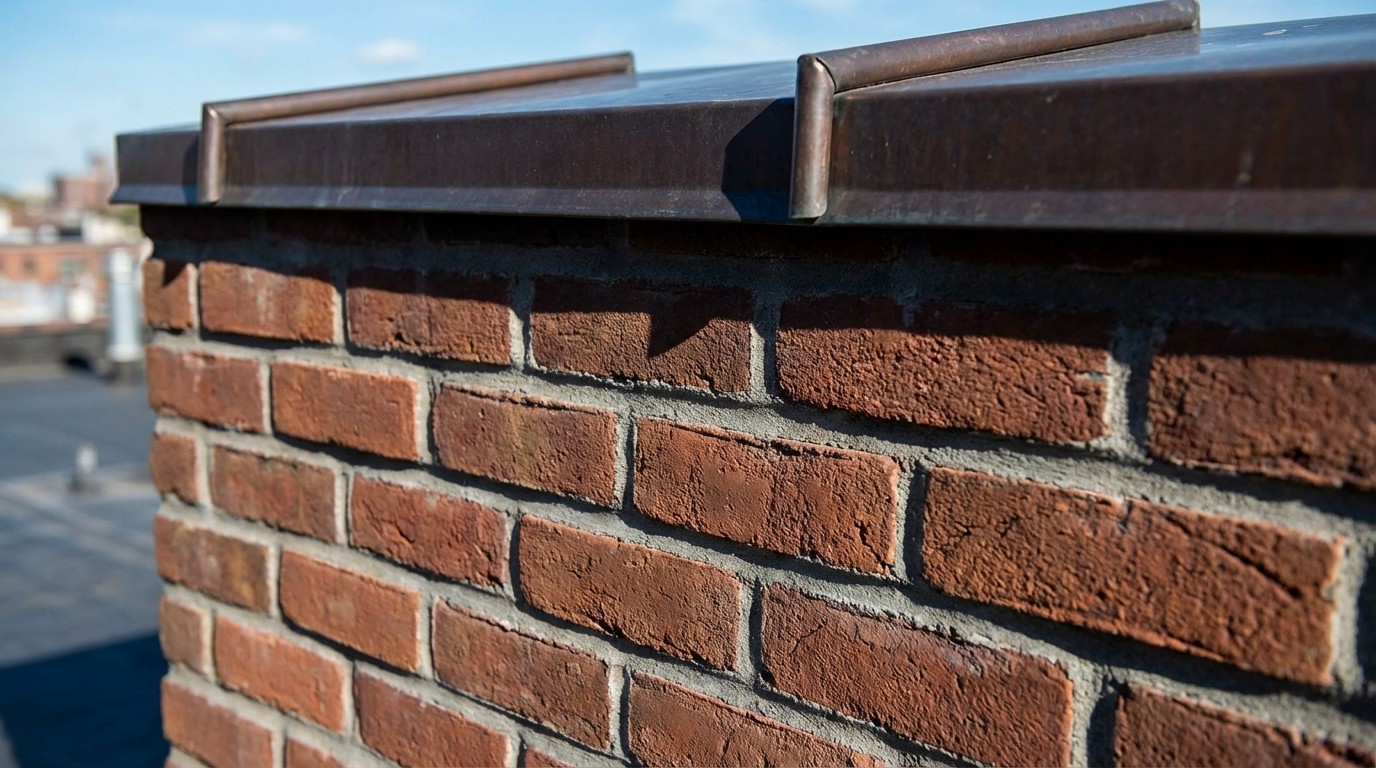Roof decking is the flat layer of wooden boards or panels nailed directly to your roof's frame, creating the solid surface that everything else attaches to. Your underlayment, shingles, and flashing all depend on it for support.
Roof decking often stays out of sight and out of mind until a roofer brings it up during an estimate or you notice signs of trouble. This guide covers what decking actually is, the different materials you might encounter, how to spot damage, and what to expect when it comes to costs and insurance.
What Is Roof Decking
Roof decking is the layer of wooden boards or panels that sits directly on top of your roof's frame and creates the foundation for everything else. Your shingles, underlayment, and flashing all attach to it. Without decking, there would be nothing solid for your roofing materials to grab onto.
Think of your roof's structure in layers, with each component building on the next. At the bottom, you have rafters or trusses, which are the angled wooden beams that give your roof its shape. Flat panels of decking get nailed across those beams. Then underlayment (a water-resistant sheet) goes on top of the decking, and finally your shingles sit on the very outside.
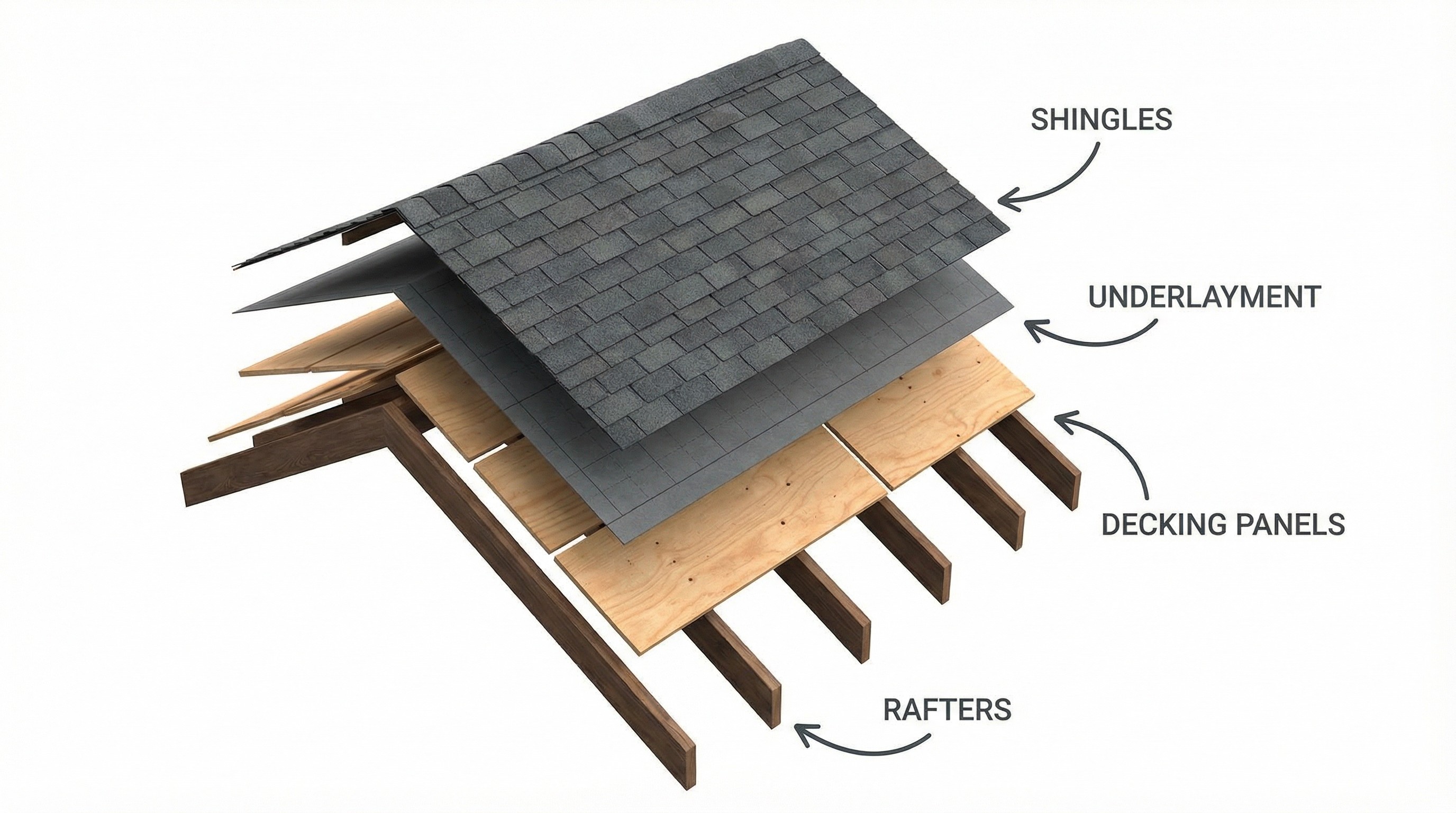
You'll sometimes hear roofers call it "roof sheathing" instead of decking. Both words mean the exact same thing, so if you see either term on a quote or inspection report, they're talking about the same layer of your roof.
Is Roof Decking the Same as Roof Sheathing
Yes. Roof decking and roof sheathing are two names for the identical component. Contractors use whichever term they prefer, and both show up regularly in quotes, building codes, and inspection reports.
If one estimate says "decking replacement" and another says "sheathing replacement," you're looking at the same work. The terminology difference doesn't indicate different materials or a different scope of work.
Why Roof Decking Matters for Your Home
Decking is the structural backbone of your roof. When it's solid, your shingles lay flat, water stays out, and your roof can handle weight from snow, wind, and workers walking on it during repairs. When decking fails, problems cascade quickly.
Here's what healthy decking actually does:
Carries weight: Decking distributes the load of your roofing materials, plus snow, rain, and anyone who walks on the roof
Provides a flat surface: Shingles and underlayment can only seal properly when they're attached to something stable and even
Affects shingle lifespan: Warped or rotting decking causes shingles to buckle, sag, or wear out years before they otherwise would
Shows up in inspections: Home inspectors check decking condition during sales, and damage here can stall or kill a deal
Decking issues tend to worsen over time if left unaddressed. What starts as a small soft spot can develop into a leak, which may then lead to mold, ceiling damage, and more extensive repairs.
Types of Roof Decking Materials
Three materials make up the vast majority of residential roof decking. Which one you have depends mostly on when your home was built.
Plywood Decking
Plywood is made from thin sheets of wood glued together with the grain alternating direction in each layer. This cross-grain construction makes it strong and dimensionally stable, meaning it holds its shape well over time.
Most plywood decking runs about half an inch thick. It handles moisture better than OSB, which makes it a popular choice in humid climates or for homeowners who've dealt with past leak issues. The tradeoff is cost. Plywood typically runs a bit more expensive than OSB.
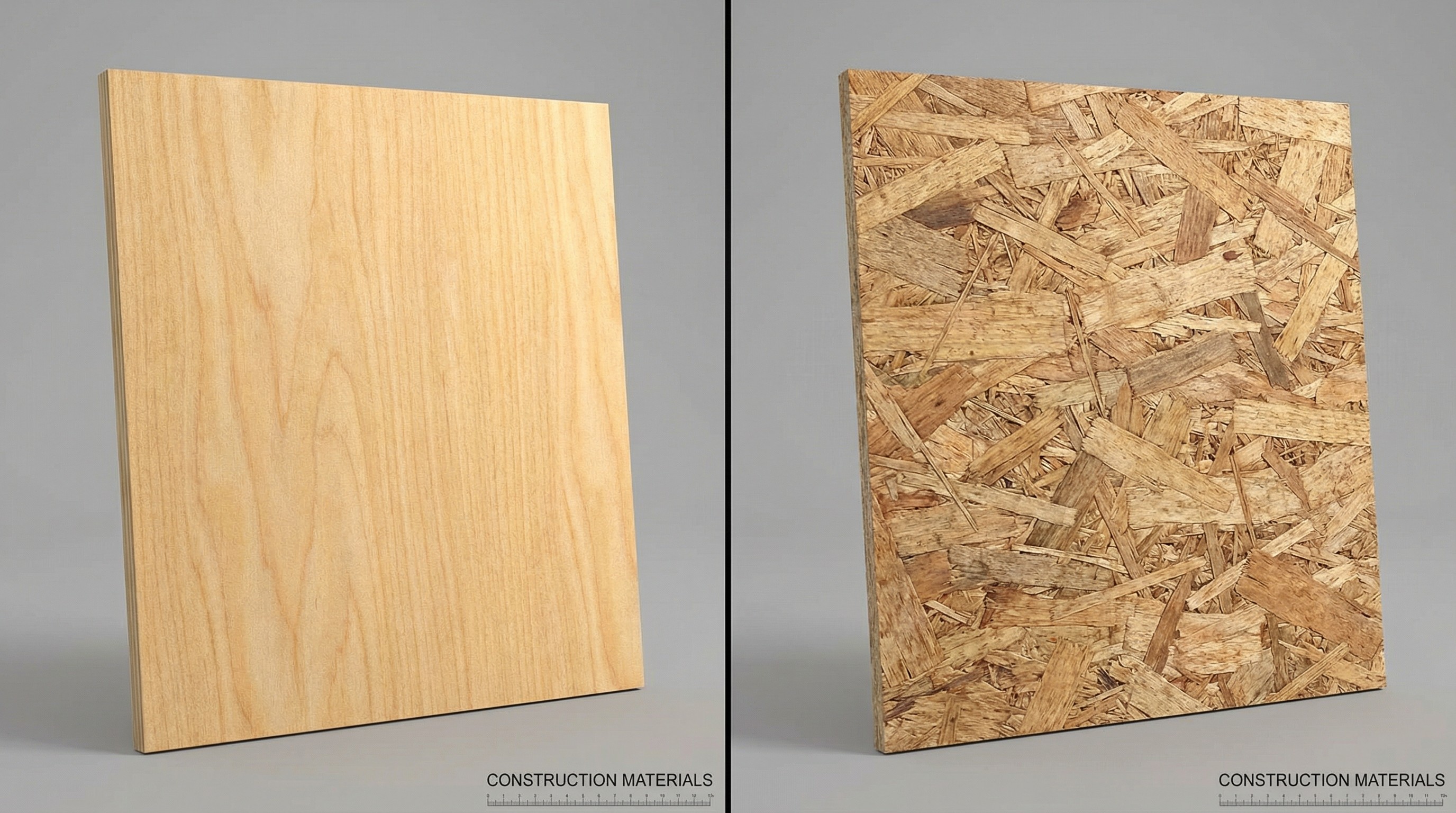
Oriented strand board (OSB)
OSB is made from wood strands mixed with adhesive and pressed into large, flat panels. It's the most common decking material in homes built over the last few decades because it costs less than plywood and performs well under normal conditions.
The key consideration with OSB is its moisture sensitivity. Short-term exposure is fine, but if moisture sits against OSB for an extended period, the edges can swell and the panel loses strength. Good attic ventilation and quick leak repairs help prevent this from becoming a problem.
Plank decking
Plank decking consists of individual wooden boards, sometimes with tongue-and-groove edges that interlock. You'll find this in older homes built before plywood and OSB became standard.
If your home has plank decking that's still in good shape, it can often stay in place during a reroof. However, if boards are rotted, warped, or have gaps between them, roofers typically replace damaged sections with modern sheet decking.
Material | Where you'll find it | What to know |
|---|---|---|
Plywood | Humid climates, higher-end builds | Better moisture resistance, costs more |
OSB | Most homes built after 1980 | Affordable, but edges swell with prolonged moisture |
Plank decking | Homes built before 1970 | May stay if solid, often gets partially replaced |
Signs Your Roof Decking Needs Replacement
Decking problems aren't always obvious from the ground. Some signs show up on the exterior, while others only appear when you look in the attic or when a roofer pulls off old shingles.
Sagging or Uneven Sections
If your roofline has visible dips or waves when you look at it from the street, that often points to decking trouble underneath. You might also notice soft spots if you walk on the roof. Both typically indicate water damage or rot that has weakened the wood.
Water Stains or Discoloration
Dark spots on your attic ceiling or on the underside of the decking boards suggest past or ongoing moisture intrusion. Even if a leak has stopped, the staining tells you water reached the decking at some point.
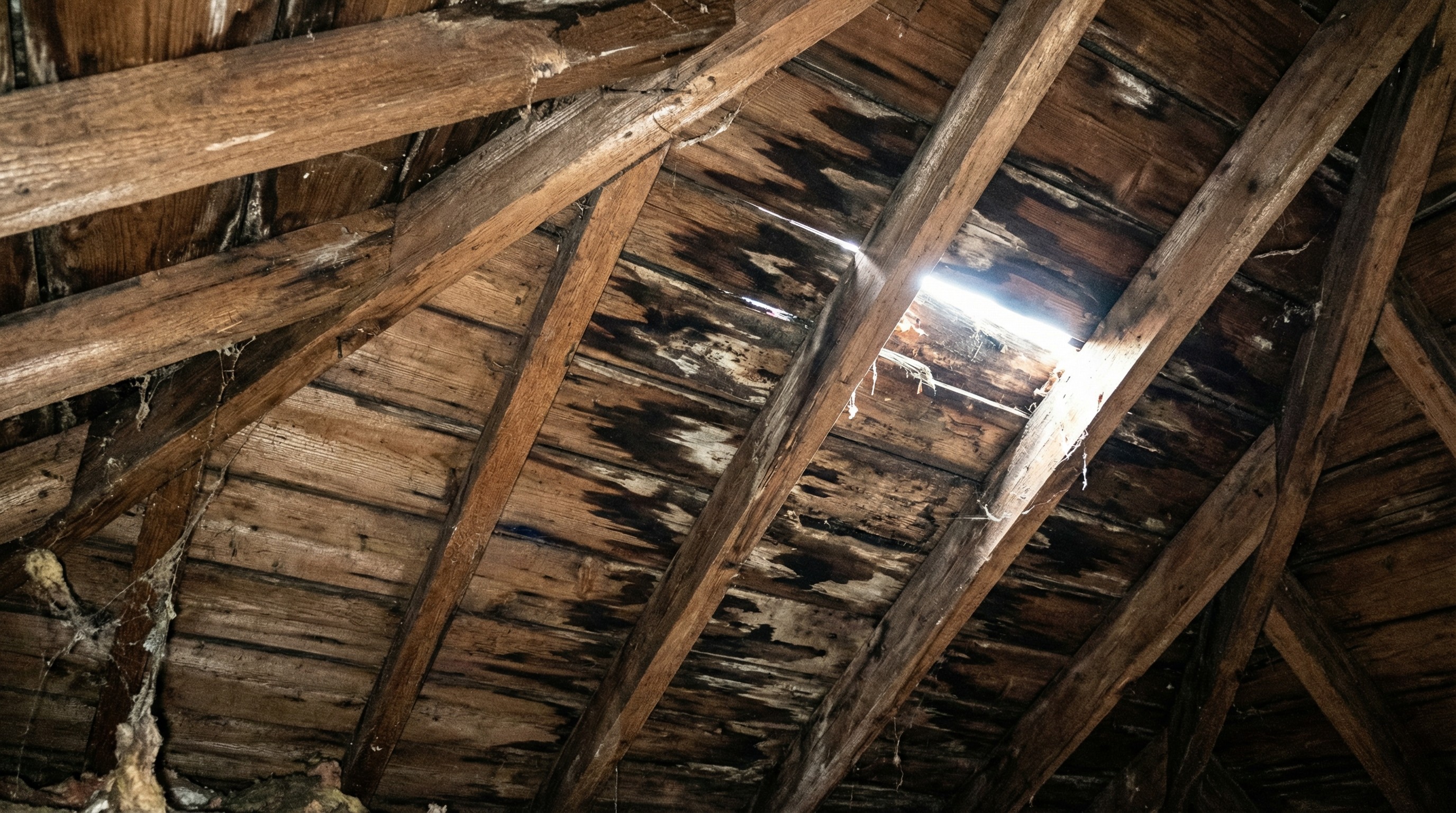
Leaks in the Attic or Ceiling
Active dripping or water marks inside your home mean water is getting through. The leak might start at a failed flashing or damaged shingle, but it often damages decking on its way through to your living space.
Cracks or Splits in the Boards
From inside your attic, you can sometimes see boards that have cracked or are pulling apart at seams. Cracked decking compromises structural integrity and typically requires replacement rather than repair.
Mold or Mildew Growth
A musty smell in your attic or visible fuzzy growth on the wood means moisture has been trapped long enough for mold to take hold. Beyond the structural concern, mold can also create health issues for your household.
Does Roof Decking Get Replaced During a roof replacement
Not automatically. Roofers assess decking condition after they remove old shingles. If the boards are solid and undamaged, they stay in place. Only sections with rot, water damage, or structural problems get swapped out.
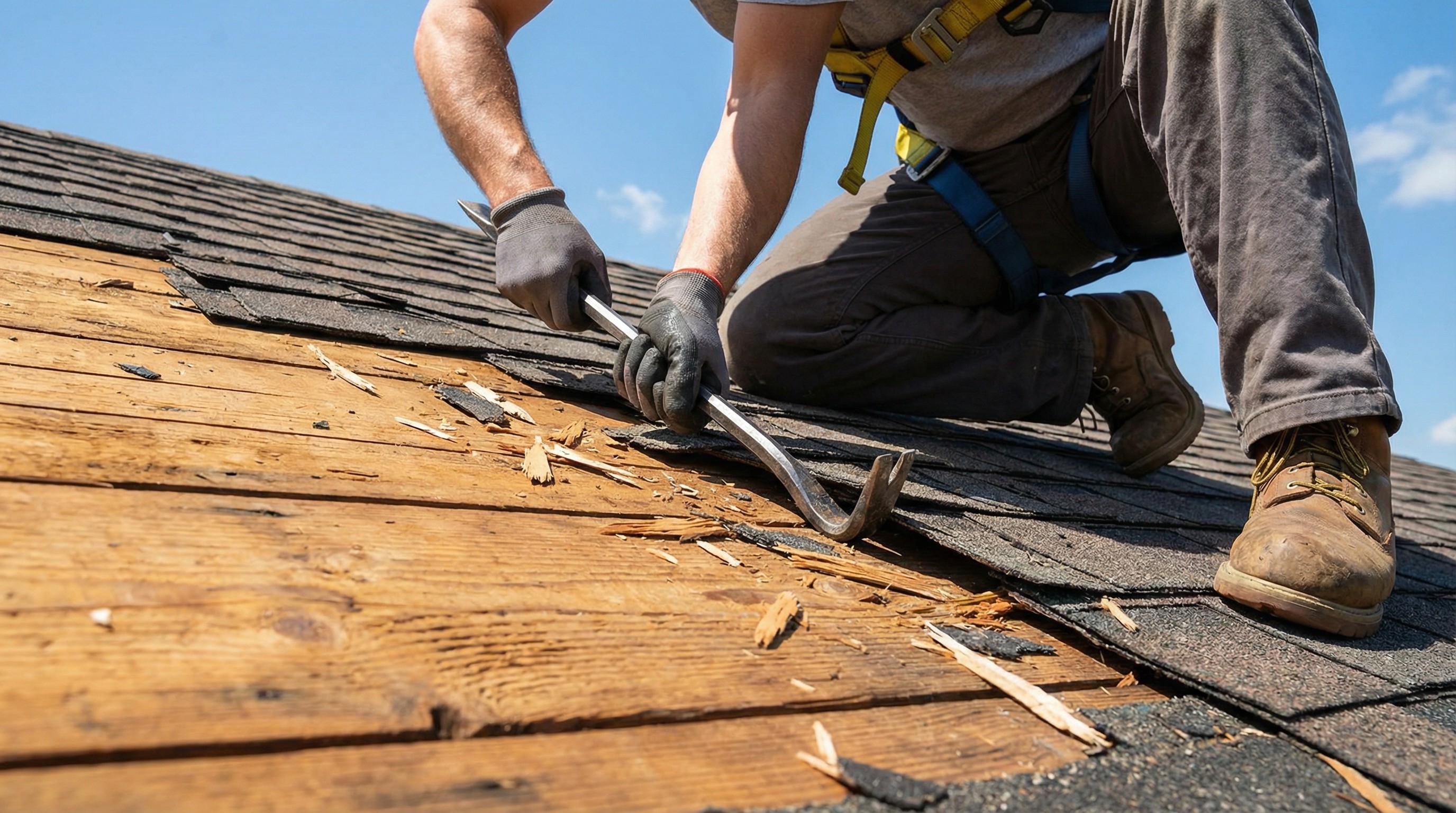
This is why your final bill sometimes differs from the original estimate. While some decking issues can be spotted from the attic, a complete assessment typically requires removing the old roofing materials to fully evaluate the decking's condition. A good roofer explains this upfront and provides a per-sheet or per-square-foot price for any decking that ends up needing replacement.
Tip: Before work begins, ask your roofer how they handle decking discoveries and what the pricing looks like if replacement becomes necessary. Knowing the process ahead of time helps you avoid surprises on the final invoice.
How Much Does Roof Decking Replacement Cost
Decking replacement is typically priced per sheet or per square foot. Costs vary based on material type, how much damage exists, and local labor rates. You might see prices ranging from $70 to $150 per sheet for materials and installation, though this varies by region and by roofer.
When comparing quotes, look for decking costs listed as a separate line item rather than bundled into a lump sum. Itemized pricing makes it easier to see what you're actually paying for and to compare estimates fairly across different contractors.
Does Homeowners Insurance Cover Roof Decking
Sometimes. Coverage depends entirely on what caused the damage.
Insurance typically covers sudden events like storm damage, hail, or a tree falling on your roof. Gradual wear, long-term neglect, and age-related deterioration usually fall outside coverage.
If you suspect storm damage, take photos before any repairs begin. Then contact your insurance company to understand what your policy covers before signing a contract with a roofer. Insurance rules around roofing can be complex, so understanding your coverage before starting work helps avoid complications and unexpected costs.
How to Compare Roof Decking Costs on Your Quotes
When you're looking at multiple estimates, a few simple checks help you compare accurately:
Look for line-item pricing: Decking costs listed separately let you see exactly what each roofer charges for this work
Confirm material type: Make sure you know whether each quote uses plywood or OSB, since the materials perform differently and cost differently
Ask about extra charges: Some roofers charge per board replaced while others build an estimate into the original quote
Match the scope: Ensure all quotes cover the same work so you're making a fair comparison
Getting multiple quotes with clear, itemized pricing helps you understand fair market rates in your area. At RoofQuotes, we connect you with vetted local roofers who provide transparent line-item pricing without sales commissions, typically saving homeowners 20% while giving you the unbiased guidance you need to make confident decisions about decking and other roofing components. Get your quotes here.




